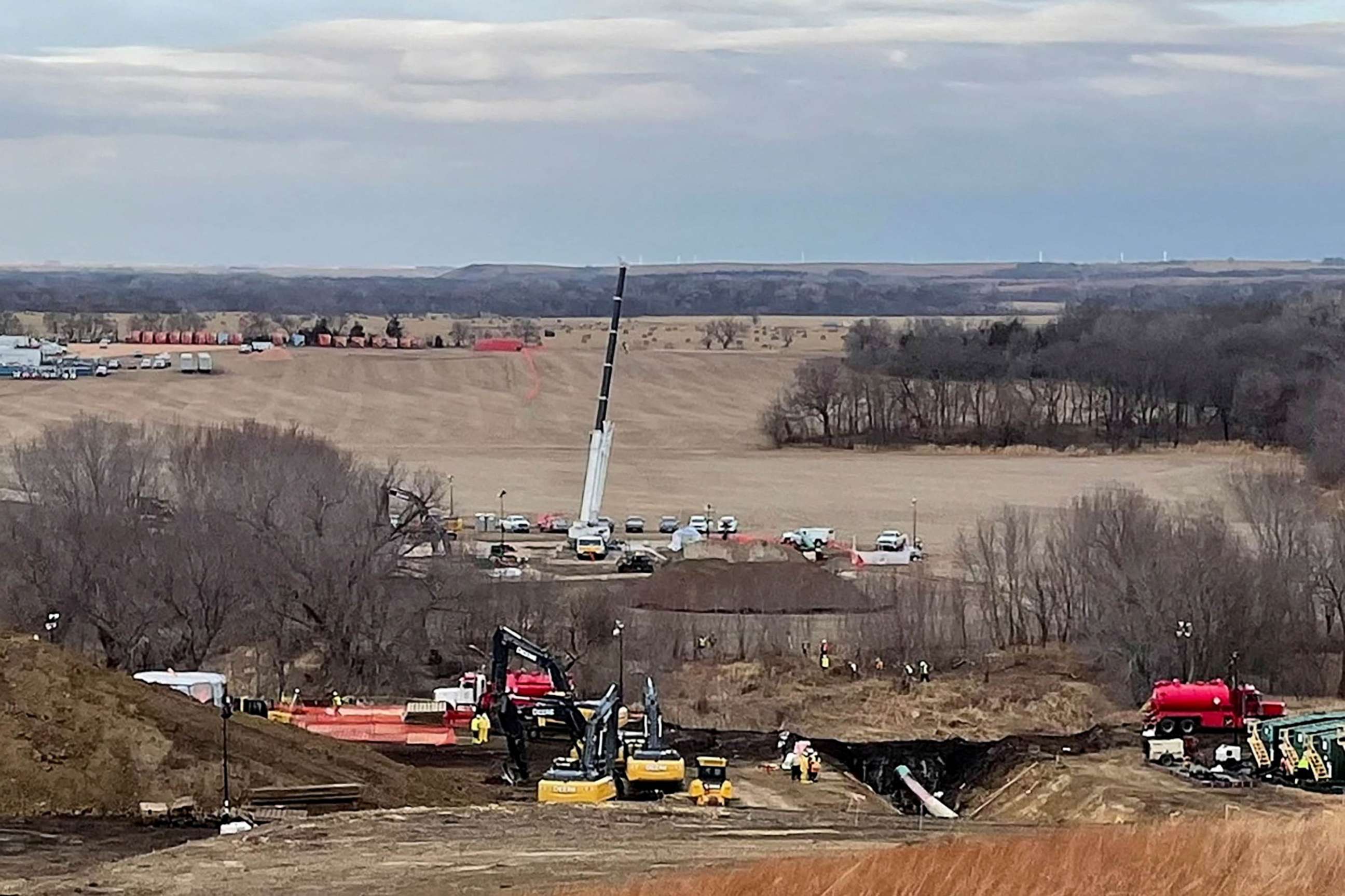Keystone Pipeline back up to speed after 600,000 gallon leak
The Dec. 14 incident leaked 600,000 gallons of oil into a Kansas creek.
A damaged section of the Keystone Pipeline was reopened Thursday after weeks of repairs and clean up following a leak of 600,000 gallons of crude oil into a Kansas creek, officials said.
For the first time since Dec. 7 the 2,687 mile conduit is fully operational, according to TC Energy, the pipeline's Canadian operator.
After completing repairs on the pipeline's Cushing extension, a controlled restart was executed Thursday, "safely returning the Keystone Pipeline to service," TC Energy said in a statement released Thursday afternoon.
U.S. Pipeline and Hazardous Materials Safety Administration (PHMSA) approved TC Energy's restart plan on Dec. 23, the company said.

"We recognize that incidents like this raise questions. We have questions too. We are committed to asking those tough questions, fully investigating and sharing our learnings and actions," Richard Prior, a TC Energy executive, said in a statement. "We take our responsibility very seriously. We will not rest until we have recovered and remediated the areas affected by this incident. No incident is ever acceptable to us."
The cause of the leak remains under investigation. The damaged section of the pipeline was removed and sent to an independent lab for metallurgical testing as directed by PHMSA, the company said.

Oil began flowing again through the miles of pipeline unaffected by the spill on Dec. 14.
At full operation, the pipeline normally pumps about 622,000 barrels, or more than 26 million gallons of oil per day from Alberta, Canada, to refineries in Texas, Illinois and Oklahoma. A barrel of oil is equivalent to 42 gallons, or about the size of a typical bathtub, according to industry standards.
The Cushing extension running from Washington County, Kansas, to Cushing, Oklahoma, had been closed since the leak.
The Kansas oil leak is the biggest in the United States in more than a decade and the largest in the 12-year history of the Keystone Pipeline.
The leak in Kansas was first detected just after 9 p.m. on Dec. 7, about 20 miles south of a pipeline's Steele City, Nebraska, terminal. The leak in the 36-inch diameter pipeline spilled down a hill and into Mill Creek in Washington County, prompting TC Energy to shut down the entire line.

Prior said crews remain at the site cleaning up the area affected by the spill. As of Thursday, crews had recovered 7,690 barrels of oil, or nearly 323,000 gallons, from Mill Creek and rescued wildlife, including a beaver affected by the spill, according to TC Energy.
The leak was the latest in a series of accidents on the pipeline. A federal report released last year showed the conduit recorded 22 accidents between 2010 and 2020 and found the severity of spills has "worsened" in recent years. The report conducted by the U.S. Government Accountability Office showed the previous incidents leaked a total of 11,975 barrels of crude oil, or a little over 500,000 gallons.
The report found that four of the biggest Keystone Pipeline oil spills between 2010 and 2020 were caused by issues related to the original design, manufacturing of the pipe or construction of the pipeline.



